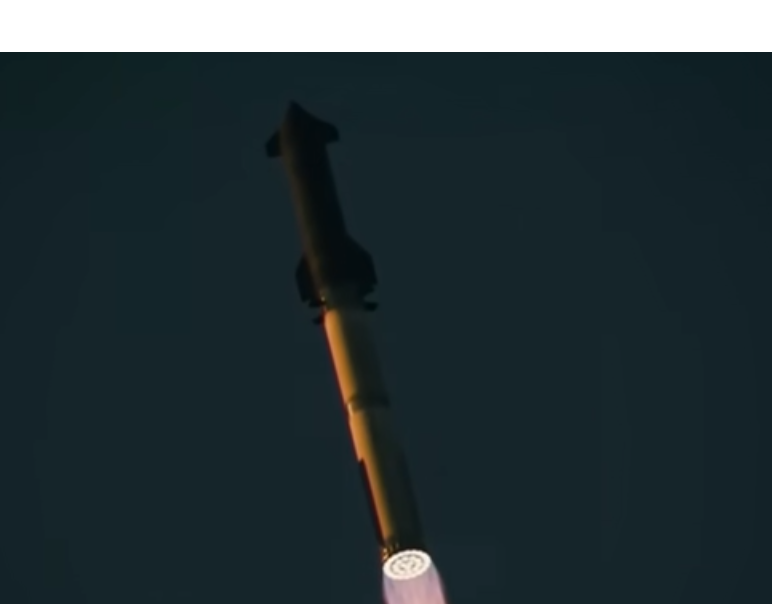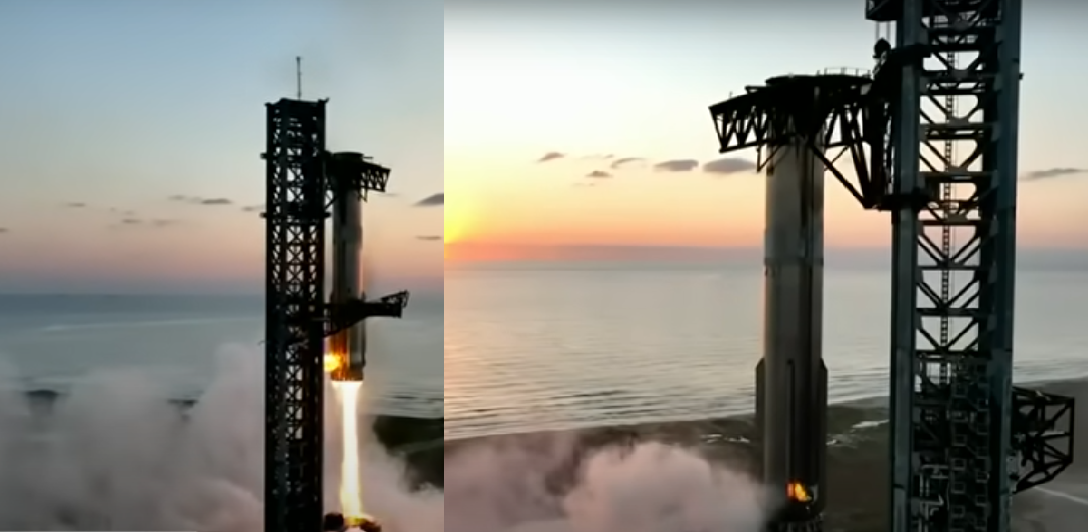A New Dawn in Space Exploration: The Triumph of Starship Flight 5
In a spectacle that captivated the world, Starship Flight 5 has achieved what many believed to be the pinnacle of human ingenuity and engineering prowess. As the sun rose this morning, so too did the hopes and dreams of a global audience, eager to witness history in the making. From the countdown to the triumphant return, every moment was a testament to the relentless pursuit of progress.
The successful launch and landing of Starship Flight 5 marks a monumental achievement in the realm of space exploration. SpaceX, under the visionary leadership of Elon Musk, has once again demonstrated its capability to push the boundaries of technology and engineering. This mission not only signifies a leap forward in our ability to explore and colonize space but also serves as an inspiration for future generations of scientists, engineers, and dreamers. As the world watches with bated breath, the future of space travel looks more promising than ever, thanks to the relentless efforts of SpaceX.
The Countdown Begins
The excitement was palpable as the countdown commenced. The best words you could possibly hear, “20 seconds away from liftoff,” reverberated through the control room. The anticipation built with each passing second, and at T-minus 5, 4, 3, 2, 1, the vehicle launched, its engines roaring to life. The chamber pressure was nominal, and the rocket began its ascent, piercing through the atmosphere.

Max Q: The Test of Strength
As the rocket climbed, it faced the greatest aerodynamic pressure, known as Max Q. This phase is the ultimate test of the vehicle’s structural integrity, and Starship Flight 5 passed with flying colors. The crowd at launch control erupted in cheers as the vehicle continued its journey upward, undeterred by the immense forces acting upon it.

Hot Staging and Engine Ignition
The next major milestone was hot staging, where the booster engines began to shut down, all but three. This process, known as “most engines cut off,” was a critical moment. The remaining engines continued to propel the rocket, preparing for the ignition of the ship’s engines. The tower team performed their go/no-go checks, and the atmosphere was charged with anticipation.
Stage Separation: A Moment of Awe
Stage separation was a sight to behold. The ship, now under its own power, lit up its six Raptor engines, a display of raw power and precision. The booster, meanwhile, began its descent back to the launch site. The crowd at Hawthorne erupted in awe as they witnessed the blue flames from the booster, a visual spectacle that left everyone in rapturous applause.

The Booster‘s Return
As the first stage performed its maneuvers, the booster made its way back to the launch site. Avionics powered on, and the tower conducted checks to ensure a smooth return. The flight director confirmed the tower was go for catch, a critical criterion for the mission’s success. The booster, now on its return trajectory, was a sight to behold as it prepared for a precision landing.
The Catch: A Symphony of Engineering
The moment of truth arrived as the booster approached the launch tower, the same structure it had departed from just minutes earlier. The command for the booster to return was sent, and the crowd watched in awe as it descended. The liftoff had been successful, and now the challenge was to catch the booster using the “Chopsticks” – an intricate mechanism designed for precision.
Landing and Touchdown
The booster ignited its 13 Raptor engines, decelerating rapidly as it neared the launch site. The crowd watched breathlessly as the booster descended through the plume, moving with incredible speed. With a final burst of power, the booster touched down, completing a flawless landing. The cheers from the crowd were deafening, a testament to the monumental achievement they had just witnessed.
The Ship’s Journey
As the booster landed, the ship continued its journey. Separated from the booster, it now operated independently, continuing its mission. The confirmation that the tower was go for catch was the final piece of the puzzle. The ship’s six Raptor engines roared to life, propelling it to new heights and new horizons.
Reflections on the Launch
This historic flight was more than just a technological achievement; it was a symbol of human ingenuity and the relentless pursuit of progress. From the liftoff to the booster’s return, every moment was a testament to the precision and dedication of the team behind Starship Flight 5.
Conclusion
The successful launch and return of Starship Flight 5 mark a new chapter in space exploration. It is a triumph of engineering, a testament to human ingenuity, and a glimpse into the future of space travel. As we look to the stars, we can take pride in knowing that the limits of what we can achieve are bound only by our imagination and our determination to push the boundaries of what is possible.
In the grand narrative of human progress, today’s launch will be remembered as a milestone that brought us one step closer to the stars. It is a story of ambition, innovation, and the unyielding spirit of exploration. Starship Flight 5 has not only reached new heights but has also inspired a new generation to dream bigger, reach higher, and strive for the stars.
FAQs
Q: What is Max Q? A: Max Q is the point during a rocket’s ascent where it experiences the maximum dynamic pressure. This is a critical phase where the structural integrity of the vehicle is tested to its limits.
Q: What is hot staging? A: Hot staging refers to the process where the booster engines begin to shut down, except for a few, allowing for a seamless transition to the ship’s engines igniting.
Q: How does the booster return to the launch site? A: The booster uses a combination of aerodynamic surfaces and engine burns to navigate its way back to the launch site, where it attempts a precision landing.
Q: What are the “Chopsticks”? A: The “Chopsticks” are an intricate mechanism designed to catch the returning booster, ensuring a safe and precise landing.
Q: What powers the ship after separation from the booster? A: After separation, the ship operates independently, powered by its six Raptor engines, allowing it to continue its mission beyond the booster’s capabilities.














Post Comment